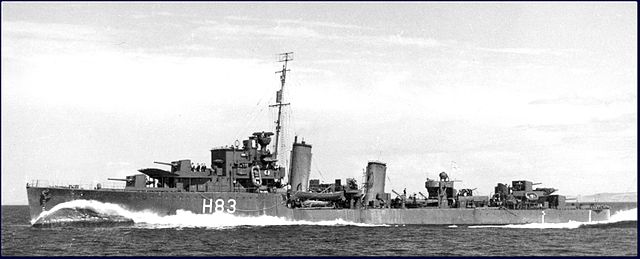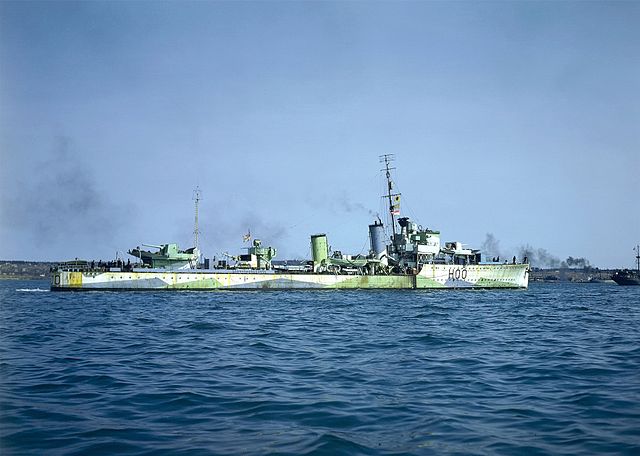HMS Cygnet was a C-class destroyer built for the Royal Navy in the early 1930s. The ship was initially assigned to the Home Fleet, although she was temporarily deployed in the Red Sea during the Abyssinia Crisis of 1935–36. Cygnet was sold to the Royal Canadian Navy (RCN) in late 1937 and renamed HMCS St. Laurent. She was stationed on the west coast of Canada when World War II began in September 1939, and had to be transferred to the Atlantic coast for convoy escort duties. She served as a convoy escort in the Battle of the Atlantic and participated in the sinking of two German submarines. The ship was on anti-submarine patrols during the invasion of Normandy, and was employed as a troop transport after VE Day for returning Canadian servicemen. St. Laurent was decommissioned in late 1945 and scrapped in 1947.
St Laurent, 20 August 1941
Late-war photo of St. Laurent
The C and D class was a group of 14 destroyers built for the Royal Navy in the early 1930s. As in previous years, it was originally intended to order a complete flotilla comprising eight destroyers—plus a flotilla leader as the ninth unit—in each year. However, only four ships—plus a leader—were ordered under the 1929–1930 Programme as the C class. The other four ships planned for the C class were never ordered as an economy measure and disarmament gesture by the Labour government of Ramsay MacDonald. A complete flotilla—the 'D' class—was ordered under the 1930–1931 Programme.
HMCS Ottawa
HMCS Restigouche about 1942–43
HMCS Ottawa about 1942–43




